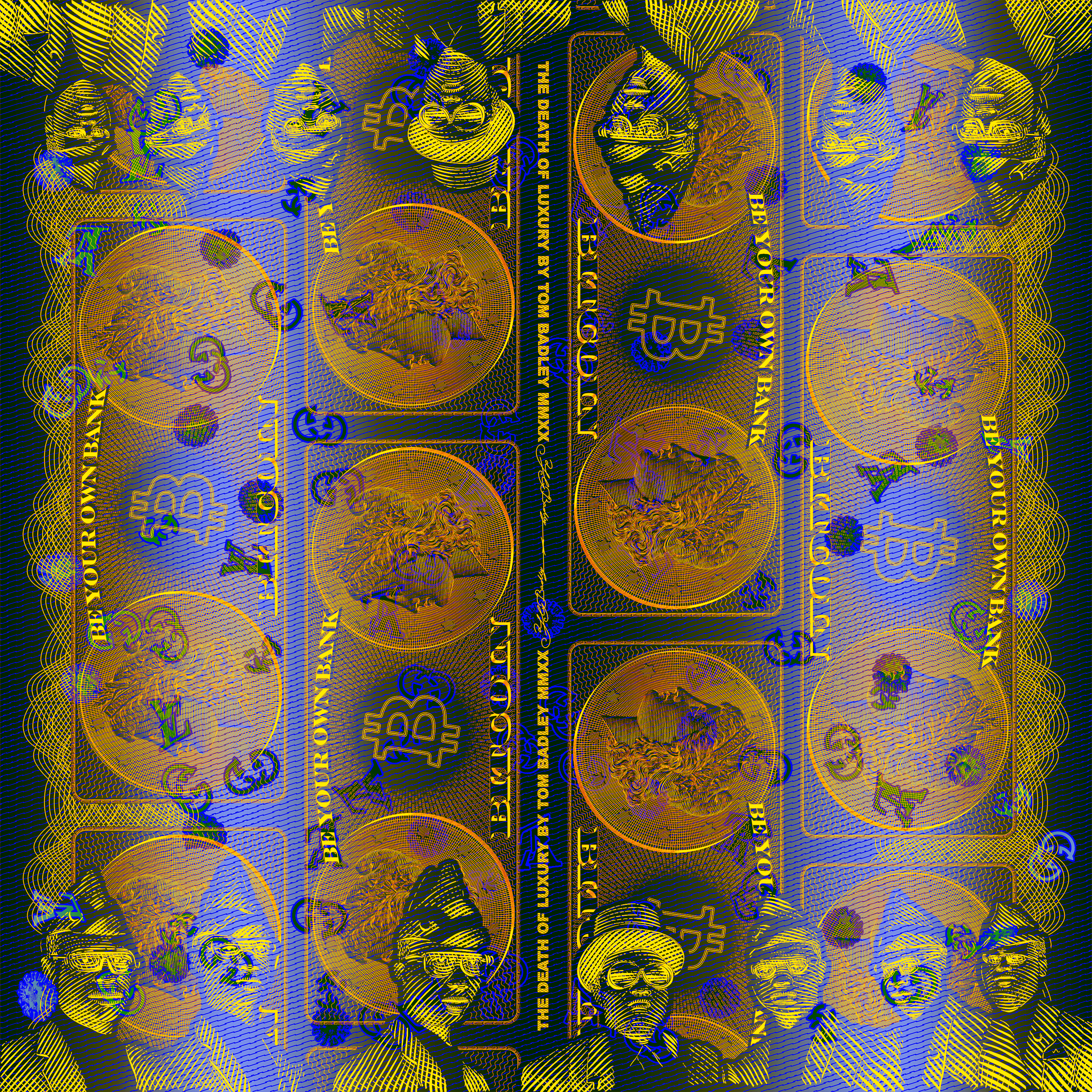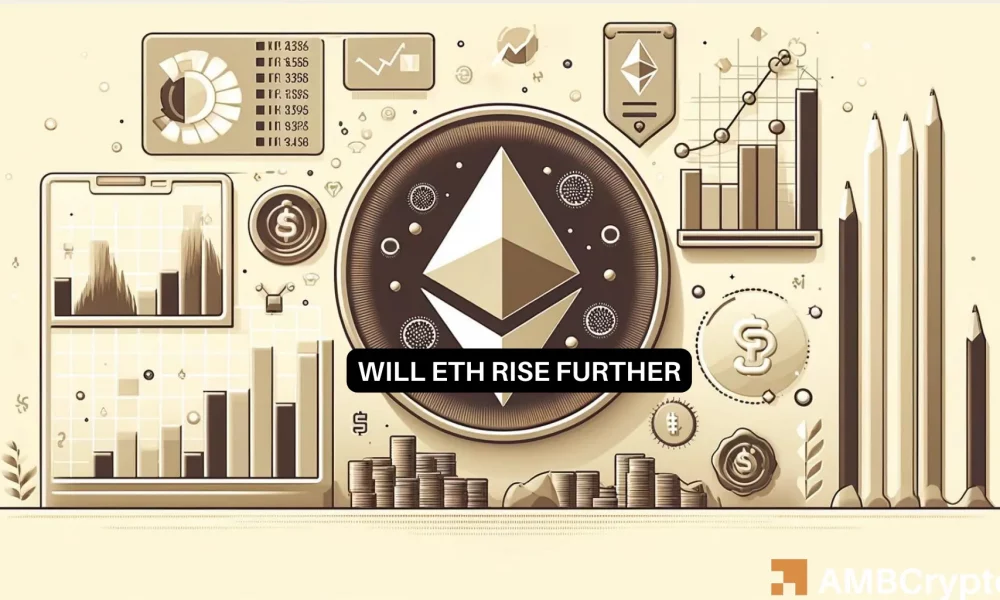Above: “Bullish vs Bearish” by @burst_
I.
Walking through Times Square is always a nightmare, especially during the summer with so many major events vying for your attention. This time of year, civilians walk by sad Elmos and middle-aged women in stars-and-stripes bikinis interspersed with NYC Pride-goers, peace-and-love yogis, and new money millennials and crypto bro wannabes–some dressed up as pixel art characters, others sporting capes. Outside the Marriot Marquis, a woman pairing red tights and a red lace bra, wearing a T-rex head and a tail blows bubbles from a handheld bubble gun.
It’s Monday, so everyone is going upstairs to get their passes, to shill their projects, and to invite women to parties in hopes of masking the scene’s persistent homogeneity. Waiting for my colleague Oliver Scialdone to arrive so we can take the escalators up to the 9th floor, girls with Neopets shirts and men in all black, smoking cigarettes pass me by.
After picking up our passes, Oli and I walk to the train to hang out at my place for an hour or two before our first event of the week, a SuperRare x Corvet party at the Dream Hotel, which is coincidentally, the New York branch of the same hotel chain we stayed in during Bitcoin Miami.

photo taken by the author
“Did you hear?” they ask me as we weave through Karens in yoga shorts and straight-laced folks in rainbow apparel from Target on our way to the train. “The CEO of Kraken [Jesse Powell] told his employees that he’d rather give them 4 months of paid leave to find another job than to make the company culture more inclusive.”
Finance was never going to be the poster child for inclusivity, I thought, but wasn’t crypto finance supposed to be more than the homophobic jokes at the water cooler and after hours meetings at the strip club that made traditional finance so gross?
II.
NFT NYC boasted 1,500 speakers across 7 stages, the largest offering since the conference’s inception in 2019. Like last year, some of the panels were grouped into tracks. I prioritized new applications in NFTs and DeFi while Oli highlighted talks on community and gaming. On Friday afternoon I had chosen all of my preferred events, made calendar events on my phone, and identified the booths I wanted to visit. By Monday, the schedule had changed, some events moved, and some canceled altogether.
On the first morning of the conference, the trains were slow and many were delayed, but I knew better than to take an Uber into Times Square. Oli and I texted back and forth, trying to figure out what was left, and what was worth diving into at the last minute. I arrived at Radio City Music Hall 15 minutes late in hopes of missing some of the boasting that often accompanies huge crypto conferences like this one. Alas, even despite the tumbling bear market–or perhaps because of it–the hype was turned all the way up.


“$30 billion have been invested in NFTs in the last two years,” a middle-aged gentleman in a casual suit stated as I walked into a near-full theater filled with people eating plastic-wrapped danishes and drinking too-hot coffee from cardboard boxes. “NFTs are the most successful new consumer product since the smartphone,” David Pakman, Managing Partner of CoinFund, continued. Are NFTs consumer products, I thought to myself as people around me cheered. And why were they cheering, anyway? Working in fine art NFTs, I had always thought of NFTs as a mechanism by which artists could sell their work, and conversely, a mechanism by which the creation, curation, and collection of culture could be rewarded. Did the act of value exchange necessarily make it a consumer product? God, I hoped not.
But the most enticing data point Pakman shared was that even though asset values have gone down, the market cap of NFTs has continued to go up. The speed and quantity at which NFTs were being purchased was outpacing the effects of the bear market, which was, perhaps, a more appropriate moment for the audience to rejoice.
The host came onto the stage clapping his hands, then introduced the next speaker and summarily left the stage, but not before inviting everyone in the theater to an ETH vs. Solana dance battle in the “Puppy Room.”

the Marriot Marquis by Oli Scialdone
III.
If web3 was going to usher in a new era of control and ownership over online identity, then NFTs would be the community’s vehicle of choice. Everything from your passport to your college diploma could be a token that only you could control, and in some cases, profit from. One presenter asked us to imagine a world where our credit scores were NFTs, and that each time a lender checked our credit, they paid us a fee to do so. All of these examples would be non-transferable, or “soulbound” NFTs, and they would replace all of the paper documents that we carry around (and misplace in our apartments), as well as all of the pieces of our online identities that we currently have to pay for in order to access them.
But that was all mere speculation.
In the last year, several modes of art and entertainment have adopted the utopian visions of web3, spurring both user- and creator-focused innovations. Tale of Us, in conjunction with artist and curator Alessio De Vecchi, has attempted to create a DAO for fans to capitalize on their loyalty, aiming to give them a kickback on sales based on how many times they’ve played a song, using tokens to track involvement and huge NFT sales to fund their treasury. Brendan Canty and Minted used NFT sales as a way to take their films into post-production and invite collectors to become producers. And “Axie Infinity” has made owning a character in a video game as an NFT (and even playing the game) potentially profitable. As a poet, I’ve always worried that my passion would leave me penniless. Were the arts leading the way to crypto adoption out of necessity, or because communities formed by joint struggles and creative endeavors were just better at getting to the point?

image by Oli Scialdone
Ivan Soto-Wright, the Founder and CEO of Moonpay (one of the companies sponsoring the conference) came onto the stage, speaking about partnering with the movie industry, providing NFTs to moviegoers that would invite them back for an exclusive experience. “The next phase of NFTs,” he said, “is real world utility and functionality.” There was that word again, utility, a word that began to buzz throughout the crypto world, a largely empty promise approaching the same level of cringe as “large global consciousness” and “we’re still so early.”
His presentation was forward-thinking and inspirational up until the point he announced that Moonpay was “not only aiming to establish a payment infrastructure, but also a web infrastructure” (whatever that meant), and he quickly pivoted to a live demonstration of Moonpay’s newest offering: Hypermint. Moving us through the application, Soto-Wright showed us how any user could make a custom smart contract on Ethereum, Solana, or Polygon without any coding required.
TED Talks turned demo days were the norm throughout the week. Battle cries surrounding the resilience of the market and the inevitable bounce back to bull territory reminded us that we were all gonna make it. “Bear markets are an opportunity for visibility and therefore education,” Ryan Wyatt, Polygon Studios’ (another NFT NYC sponsor) CEO stated at the beginning of his talk. He then quickly transitioned into gaming, saying quite aptly that “bad experiences and misinformation are the two biggest blockers to gamers,” which could be true of anyone who has been scared off from crypto by headlines of rug pulls and celebrity cash grabs. Sure, education could be the answer, but what was the counterpoint? The crypto industry was quick to thwart negative misconceptions of itself, but during the summer of 2022, the thing that lay under the hood was beginning to look more like an I.O.U. for a spacecraft, rather than an engine of innovation.
Entrepreneurs and evangelists alike were trying their best to spread the good word of web3, to pluck us from the ragged claws of Facebook and Google, but like any golden child, they (we) can be dreadfully starry-eyed and stubborn. No one wants to be spoken down to, and most people don’t want to be saved. Least of all when the savior is also trying to sell them something they don’t want.
IV.
My days were spent nodding my head to people explaining the problems facing web2, and shaking my head to their thinly veiled attempts at finding new investors who had already spent $600 plus travel costs for the opportunity to attend the conference. “The future of NFTs?” the Radio City Music Hall host cried from the stage, “fonts, books, movies, videos, and applications in the real world.” But who was going to build them?
Most of the people on stage were community managers and CEOs (many of them 30-something-year-old males wearing ripped jeans and hideous designer sneakers), and most of the people I spoke to roaming the halls of the multiple arenas were in marketing and public relations, and only spoke to me because of the SuperRare press pass around my neck. Or to invite me to parties. The art and community panels were poorly attended, Oli later told me, while the marketing and sales panels were so packed that arriving on time still meant listening from the back of the room. Had “community” just become a code word for “consumer base”? And if so, what was “revolution” code for?
Having enjoyed the ASMR-esque drone of the multi-day hackathon that was ETHDenver, I couldn’t help but wonder, where were all the devs?
According to a report from Electric Capital issued in January of this year, there are over 18,000 active developers committing code to open-source crypto and web3 projects, and over 65% of them joined in 2021. While that jump in participation is a positive sign for the industry, there were over 26.8 million active software developers worldwide at the end of 2021, as estimated by the latest State of the Developer Nation report, meaning that less than 0.001% of coders are involved in crypto projects, even though demand is high and rising. It also means that more than half of those interested in working in web3 have less than a year of experience in both the philosophy and the coding languages that power crypto. Were the only people excited about crypto the “idea guys?” Yikes.
But the revolutionary ideas kept coming, and as the talks went on, I felt myself getting more and more pumped for the future of NFTs, only to remember that the sugar high of the crypto Kool-Aid was artificial. ETH was still on its downward spiral, and PFPs were losing their financial footing. No matter how many people showed up in BAYC swag or dressed up as their metaverse avatars, nothing could shake the cruel reality of a market correction.
The last panel I attended that day was called “What Normies and Boomers Should Know in NFT and DeFi Investing: a VC Deep Dive.” The title was comical in that it lumped young people who were not interested in crypto with an older generation often labeled as grumpy and out of touch, and that it assumed the average investor had the same goals and resources as venture capitalists (now who’s out of touch?). After explaining that the issue with using NFTs as collateral is that they are not really liquid assets, and expounding on a future where DeFi will replace centralized finance and NFTs will replace “everything else,” one of the panelists (regretfully, I can’t remember which) stated that this was indeed the only future because “crypto is too big to fail.”

panel with theVERSEverse by Oli Scialdone
By mid-afternoon, I was as full of as much information–and as much b.s.–as I could manage. I was ready to leave. As I walked to the train again, my phone’s news app announced that eBay had just acquired Known Origin, and Twitter shared a retweet campaign alerting me that malicious QR codes had been spotted throughout NFT NYC. It appeared that both web2 behemoths and web3 scammers were ready to take advantage of the year’s biggest NFT conference.
V.
SuperRare hosted events each night, which were populated by artists, cryptoart collectors, industry insiders, and influencers. Platters of giant, immaculately cleaned shrimp, garlicky hummus accompanied by vegetables too good for even the best farmer’s markets, and cured meats draped over one another delighted guests who got drunk off $20 cocktails that were free if your name was on the list. Some artists dawned attire as eye-catching as their artwork, using the conference as the red carpet the traditional art world denied them.
Though SuperRare boasted our status as an art world disruptor, I couldn’t help but notice that the crypto world was beginning to look less like a pair of skinny jeans ripped through wear, and more like a pair of Gucci sneakers made to look beat up. We were at times disruptive, as when our pop-up Soho gallery exhibited only digitally-native artworks; yet we were at times emulating the very culture of status and luxury that the traditional art world embodied. Costumesque outfits, expensive hors-d’œuvre left half uneaten, talks of the next chic travel destination for the pop-up gallery. Was this the final destination of internet art culture, which emerged as an alternative to the mainstream, or was it a necessary symptom of intertwining art, any kind of art, with monetary value?
I liked the part of cryptoart that prized anonymity over fame, artistry over sales, and community above all else. But sometimes the uglier parts of it made me wonder if I had myself sold out, trading my career as a social justice journalist for something shinier and exponentially better paid. Rubbing shoulders with some of the industry’s most elite artists, people like Coldie, Sam Spratt, Ryan Koopmans, Laurel Charleston, Brendan Dawes, Cyber YuYu, Sarah Zucker, and Cath Simmard, brought up mixed feelings. I wouldn’t know most of these artists on sight if someone hadn’t introduced me to them. But does anonymity cancel out fame? Of course not.
If I learned anything that week, it was that no market condition would stop the crypto world from partying, even among layoffs. But if bear markets force us to mature, to get smarter, as Pierina Merino, the founder and CEO of Flickplay, stated in her panel, then what would be the positive outcome beyond huge sales for crypto artists? There are so many ideas about how blockchain can change the world right now, but what will we do if big ideas, and even bigger parties, are not enough? And what will we, the radical revolutionaries, do to combat the unthinkable piles of money that continue to prop up crypto startups, even amid the downturn? Web1 was a wild west too, until it was colonized by Google and Microsoft and then sold to the highest bidders. Even web2 had its moments in the sun. Will we learn from the recent past, or ignore it, and watch our beloved cryptoart, and everything the movement stands for, turned into a sexy Frankenstein ready to sell you a 1/1 Gucci belt for you to wear in your luxury metaverse of choice?
Art
The future of cryptoart as art
As the traditional art world finally begins to see the value of cryptoart, what does it mean for existing communities of artists, collectors, and blockchain natives?
Tech
Nothing but net worth: Sports collectibles cross over to the blockchain
The classic hobby gets an upgrade with NFTs, but what does that mean for collectors and leagues?
Curators’ Choice
A history of cryptoart: In conversation with artist Panter Xhita
The artist talks “a history of cryptoart,” SuperRare collector badges, and how it feels to be part of a pivotal moment in art.
The post We’re Not All Gonna Fucking Make It, and maybe that’s a good thing appeared first on SuperRare Magazine.
Read More: superrare.com

















 Bitcoin
Bitcoin  Ethereum
Ethereum  Tether
Tether  Solana
Solana  USDC
USDC  Lido Staked Ether
Lido Staked Ether  XRP
XRP  Toncoin
Toncoin  Dogecoin
Dogecoin  Cardano
Cardano  Shiba Inu
Shiba Inu  Avalanche
Avalanche  TRON
TRON  Wrapped Bitcoin
Wrapped Bitcoin  Polkadot
Polkadot  Chainlink
Chainlink  Bitcoin Cash
Bitcoin Cash  NEAR Protocol
NEAR Protocol  Polygon
Polygon  Litecoin
Litecoin  Internet Computer
Internet Computer  Uniswap
Uniswap  Fetch.ai
Fetch.ai  Dai
Dai  LEO Token
LEO Token  Ethereum Classic
Ethereum Classic  Hedera
Hedera  Render
Render  Pepe
Pepe  Aptos
Aptos  Wrapped eETH
Wrapped eETH  First Digital USD
First Digital USD  Immutable
Immutable  Cosmos Hub
Cosmos Hub  Cronos
Cronos  Filecoin
Filecoin  Mantle
Mantle  Stellar
Stellar  Arweave
Arweave  Renzo Restaked ETH
Renzo Restaked ETH  OKB
OKB  Stacks
Stacks  The Graph
The Graph  Optimism
Optimism  Arbitrum
Arbitrum  Maker
Maker  Bittensor
Bittensor